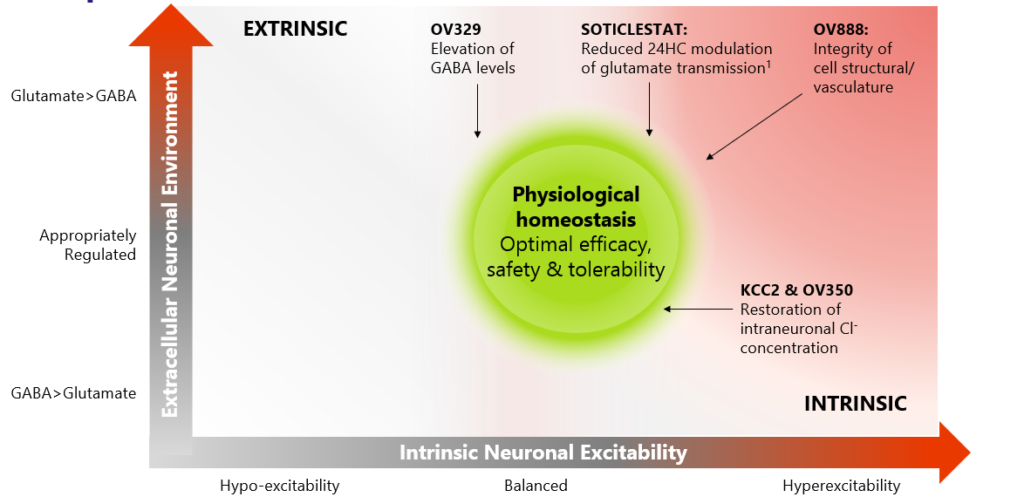what we do: restore neuronal homeostasis
Ovid’s pipeline is centered on one goal – to ameliorate neuronal hyperexcitability and return neurons to a state of homeostasis, or “balance.” An imbalance of optimal neuronal activity can manifest in a range of debilitating neurological conditions such as seizures and epilepsies. When seizure symptoms are acute or persistent, they can be life threatening or lead to significant disability. Many factors can contribute to neuronal hyperexcitability including genetic conditions, anatomical abnormalities, trauma, and even infectious disease.

how we do it: first-in-class or best-in-class mechanisms of action
The medicines that we are developing seek to address several extrinsic or intrinsic causes of hyperexcitability to restore healthy neuronal regulation. The tenet of our approach is the pursuit of unique biological targets implicated in neuronal regulation in order to advance potential first-in-class or best-in-class medicines focused on disease-relevant mechanisms of actions.
- harness a revolution in small molecules for the brain
Ovid’s pipeline is comprised of small molecule programs that can potentially be delivered as a pill, injection, or intravenously. Recent advances in synthetic methodology, formulation technology, generative artificial intelligence and biology target research have unlocked more opportunities for innovative and creative medicines. The compounds we seek to develop are brain-permeable and are designed to modulate specific biological targets. While others focus on novel modalities, we seek to take advantage of the versatility small molecules have to offer in terms of manufacturing, chemistry, and dosing to potentially deliver novel and next-generation medicines that will make meaningful improvements in the lives of patients. - pursue unique biological targets implicated in neuronal regulation
There is compelling evidence that the novel targets we pursue directly or indirectly cause hyperexcitability. These targets are associated with regulating inherent intracellular excitatory/inhibitory balance within neurons, while in a diseased state they are potentially implicated in excitatory/inhibitory imbalance. - seek to advance potential first-in-class or best-in-class mechanisms of action
Several of our therapeutic development programs seek to affect signaling, metabolic, and enzymatic pathways to modulate extrinsic causes of hyperexcitability, thereby restoring the intrinsic excitatory/inhibitory balance. In essence, they seek to change the environment surrounding the neuron.
why we do it?
These biological targets, coupled with differentiated mechanisms of action, form a pipeline of potential medicines that we hope will change the treatment landscape for people who experience treatment resistant seizures and other neurological disorders of hyperexcitability.
what comes next?
Expand to other neurological conditions with shared disease mechanisms of neuronal hyperexcitability.